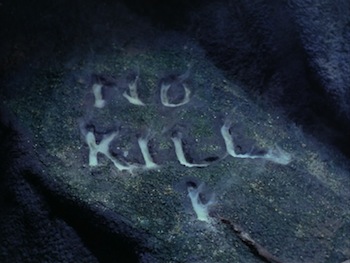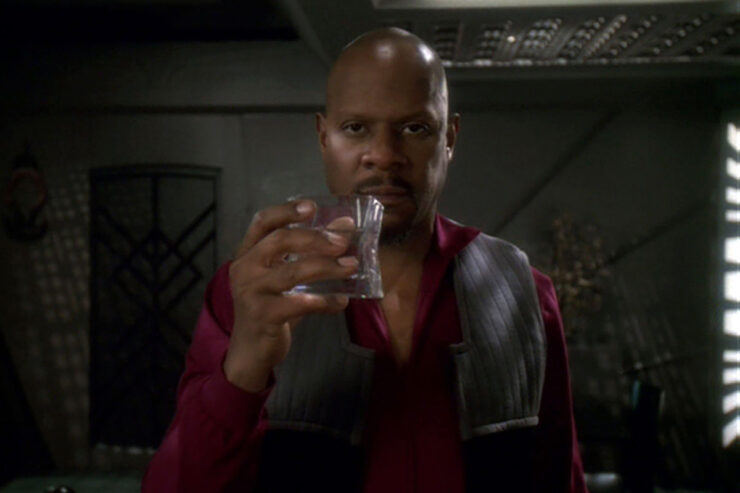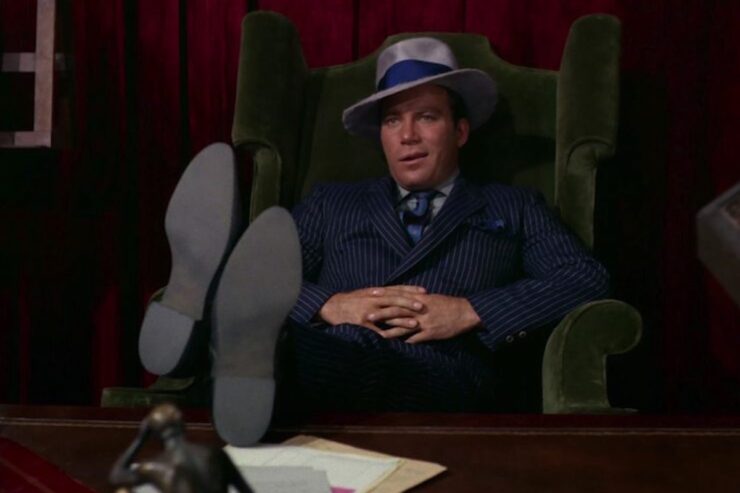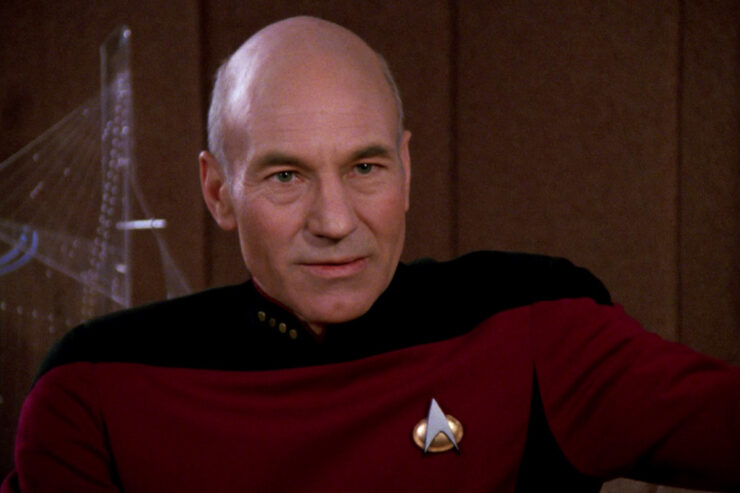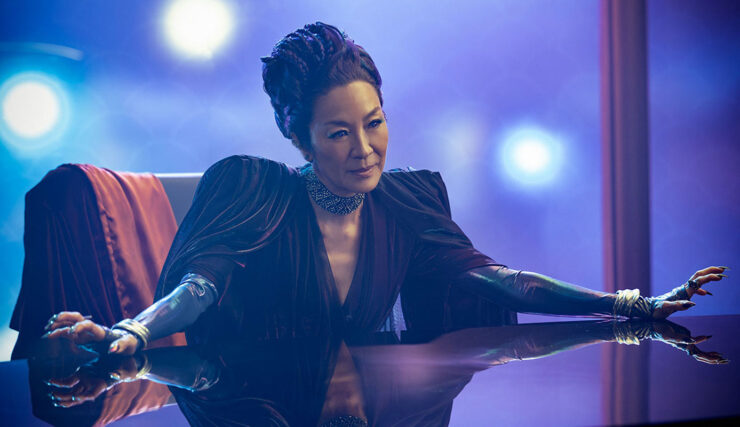“The Devil in the Dark”
Written by Gene L. Coon
Directed by Joseph Pevney
Season 1, Episode 26
Production episode 6149-26
Original air date: March 9, 1967
Stardate: 3196.1
Captain’s log. In the pergium production facility on Janus VI, a group of miners are engaged in an armed search, trying to find the thing that has already killed fifty people. Chief Engineer Vanderberg leads a team to relieve one guard, leaving behind another, Schmitter. Schmitter is understandably nervous, though Vanderberg reassures him that the Enterprise is on its way.
Only a minute after Vanderberg and the others walk away, Schmitter is attacked by something, and burned to a crisp.
The Enterprise arrives, and Kirk, Spock, and McCoy beam down. Vanderberg fills them in: three months ago, they opened a new level for mining, and suddenly equipment started disintegrating. Then the engineers sent to repair the machines were killed. The deaths have continued, now happening at higher and higher levels. The only one who has seen it and survived is Ed Appel, one of the engineers, who shot it with a phaser, but it had no effect. He only got a glimpse of it, describing it as “shaggy.” Sensors detect no life aside from the colonists.
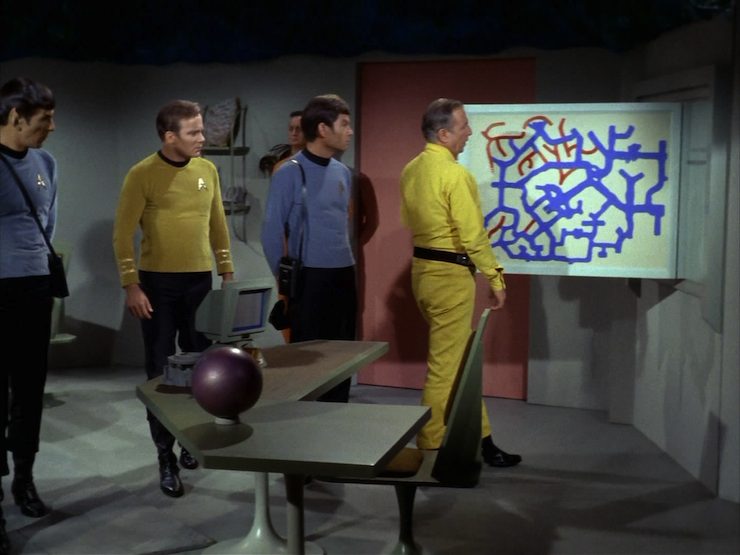
At this point, production has ceased until the issue is resolved, which is the Enterprise‘s job.
Spock also notices a silicon sphere on Vanderberg’s desk. He says they’ve found tons of them on the lower levels—almost pure silicon, but no real value, though Spock thinks they’re geologically quite impressive.
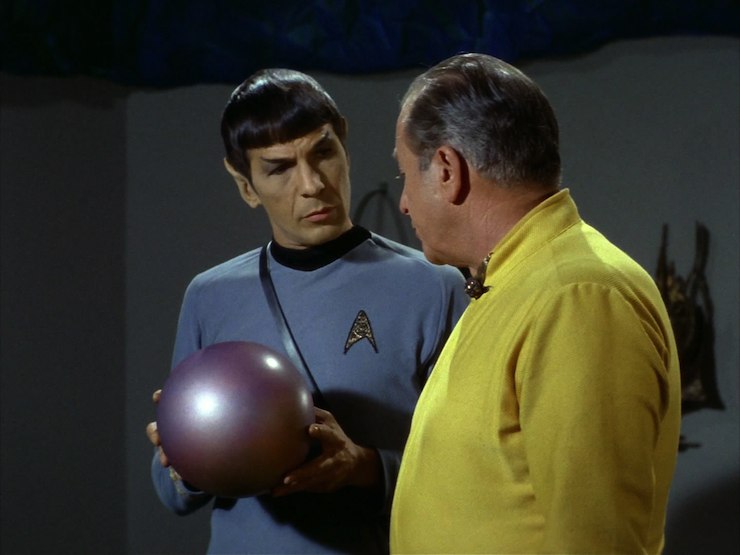
McCoy examines Schmitter’s body and reports that he wasn’t burned to death, but rather was exposed to a corrosive agent, probably some kind of powerful acid, strong enough to eat through machinery, or pretty much anything else.
Near the power reactor, another person is killed, and the creature enters the reactor room by dissolving the reactor door. A circulating pump has also been removed, one critical to the production plant’s life support system—but also a very old, outdated piece of equipment that they have no replacements for on the colony or on the Enterprise. Kirk orders Scotty to cobble together something, but the best he can do is a patch that will only hold for a couple of days.
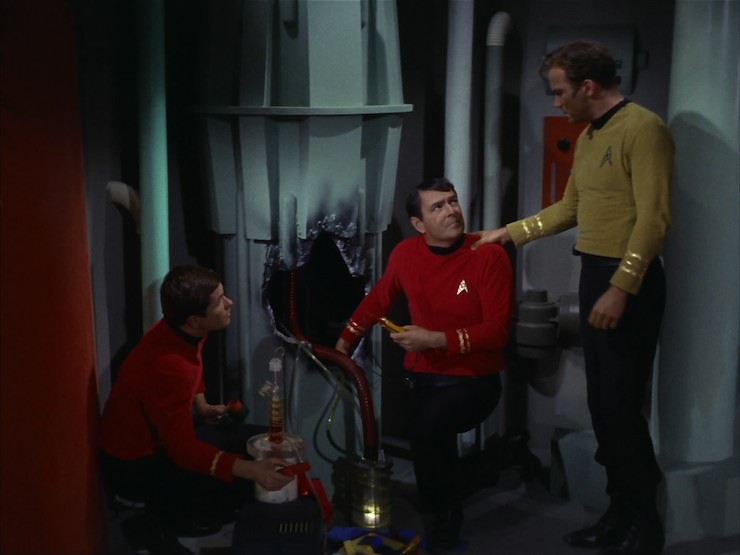
This latest attack proves the creature is intelligent, and is trying to drive away the humans. Spock theorizes that the creature could be a silicon-based life form that lives deep under the surface. He also notes that the spheres were found on the same level that the attacks started.
Scotty installs the patch on the pump. A security team has also beamed down, led by Lieutenant Commander Giotto. Kirk sends them to search for the creature, starting on Level 23, which is where the silicon spheres were found. Kirk and Spock search as well, the latter having adjusted his tricorder to seek out silicon.

One of the guards is attacked and killed by the creature, attacked so quickly that the guard never had a chance to fire his phaser. Nearby is a tunnel that isn’t on the plans, and Spock says was made within the last hour.
The creature then appears behind them. They fire on it, and it retreats—through the wall, using the corrosive that it’s used to kill people to dissolve the rock. The creature is gone quickly, but the phaser fire knocked off a piece of it.
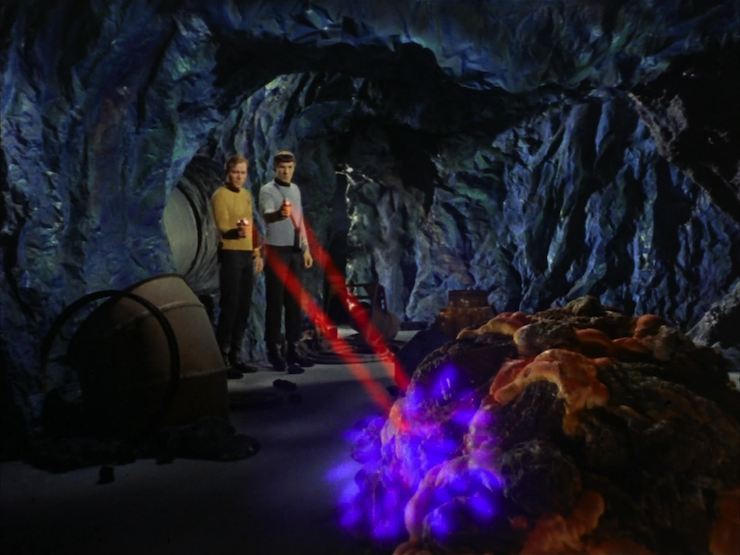
Kirk sends Giotto to continue the search, but tells him to be careful, as a wounded animal is even more dangerous, and to maintain phaser fire with significant duration. Spock has only detected one life form moving through the rock, and Spock is concerned that this may be the last survivor of a species.
Scotty’s improvised pump has failed, so the colony has ten hours before the air becomes unbreatheable. Most of the colony is evacuated, with only Vanderberg and a few others staying behind to supplement the Enterprise security detail.
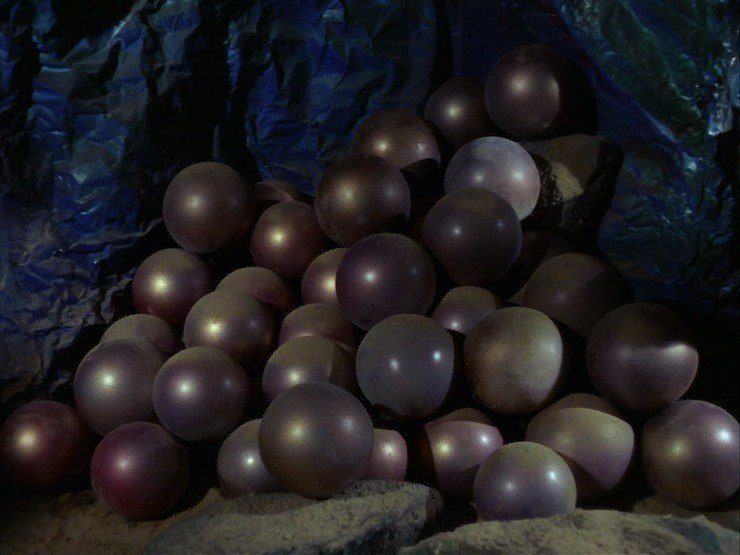
Kirk and Spock find a whole mess of the silicon spheres in what looks like a stockpile—and then also the creature. It responds to Kirk holding up his phaser, keeping its distance. It also moves to stand between Kirk and the spheres.
Spock suggests a mind-meld with the creature. He believes that the creature is protecting the spheres, and Kirk agrees, and so Kirk goes along with the suggestion.
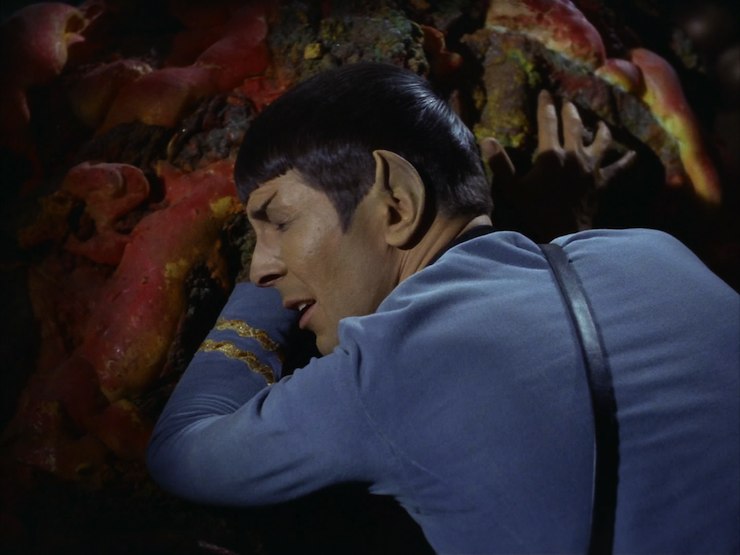
The meld is difficult and painful (we know this because Spock cries out, “PAIN!” a lot), and after breaking the link, Spock explains that the creature is the one in pain, from the wound.
But apparently it got something from the meld, too, as it etches the words “NO KILL I” in the rock in English. Spock also verifies that the creature is intelligent, calling itself a Horta.
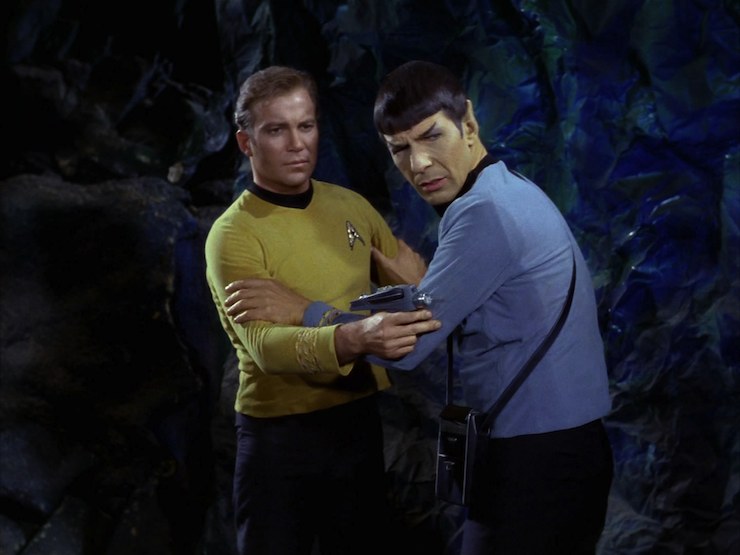
Kirk summons McCoy, hoping he can heal the Horta of its wound as a gesture of good faith. McCoy himself is skeptical, but does what he can, using a high-tech concrete that is mostly silicon, which does the trick. Meanwhile, Spock tries the meld again, and learns—through metaphorical language that he speaks in a histrionic voice—that the spheres are eggs. She is the mother of a new generation of Horta, and the miners killed thousands of her children when they unthinkingly destroyed some of the spheres. Kirk finds the missing pump, still intact.
The miners are less interested communication and more interested in revenge for their murdered comrades, and they beat up Giotto and his people and storm the cavern. But they’re brought up short when Kirk reveals that the “monster” was a mother protecting her children after thousands of them were killed.
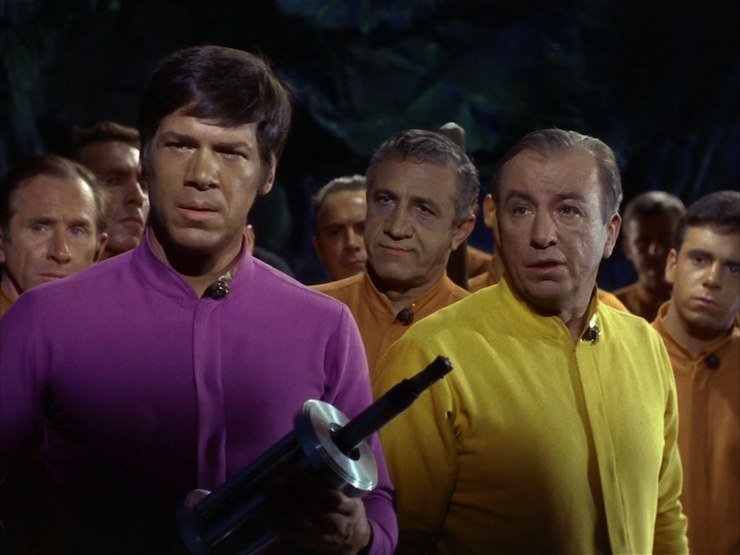
Kirk proposes a compromise: work with the Horta. They move through the rock like air and make tunnels, the miners can then collect the minerals needed. The Horta are peaceful, normally, and only acted as she did after the eggs were destroyed.
The Horta agrees, and the eggs hatch, thus leading to the beginning of a beautiful friendship.
Fascinating. Spock mind-melds with the Horta in order to learn the truth. He later reveals that she found humanoids generally repulsive, but that Spock’s ears were, at least, aesthetically pleasing. At least, that’s what Spock claimed…
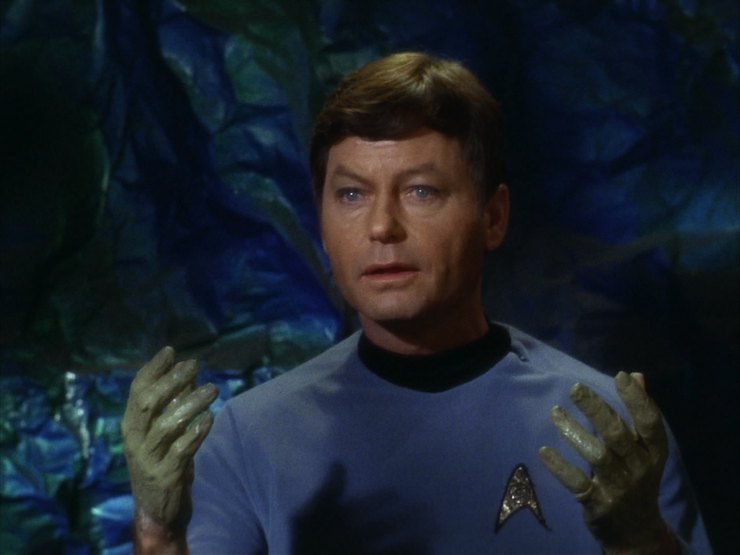
I’m a doctor not an escalator. A catchphrase is born! This episode is the first instance of the famous “I’m a doctor, not a ______” construction, with the blank being filled with “bricklayer” by McCoy when he’s confronted with the notion of healing a silicon-based life form. However, despite his complete skepticism early on regarding even the possibility of silicon-based life, he does heal the Horta. Because he’s just that awesome.
I cannot change the laws of physics! Scotty laughs when Kirk asks if he can fix the pump, as he hasn’t even seen one of that model for twenty years. But he manages to make a temporary patch. Because he’s just that awesome.
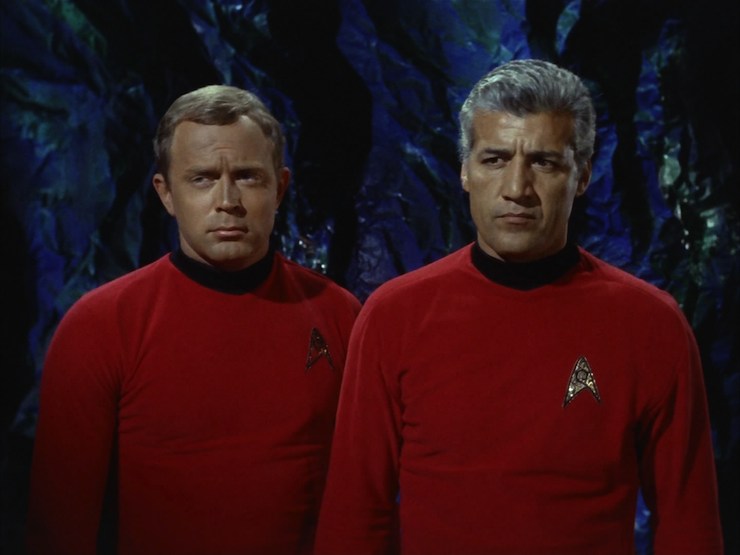
Go put on a red shirt. We actually get to see the Enterprise‘s chief of security, but he mostly just takes Kirk’s orders and never asks about the guard who was killed (who only gets a mild look of concern from Kirk after he’s killed—though the expression on William Shatner’s face is such that he could just have gas—and then is never mentioned again even by the other security folk) and gets clubbed over the head by Vanderberg, Appel, and the rest. Kirk and Spock are the only members of the search team who accomplish anything.
No sex, please, we’re Starfleet. This is the only episode of the series that has no female speaking parts. In fact, until the final scene on the bridge, the only woman we see in the episode is the Horta…
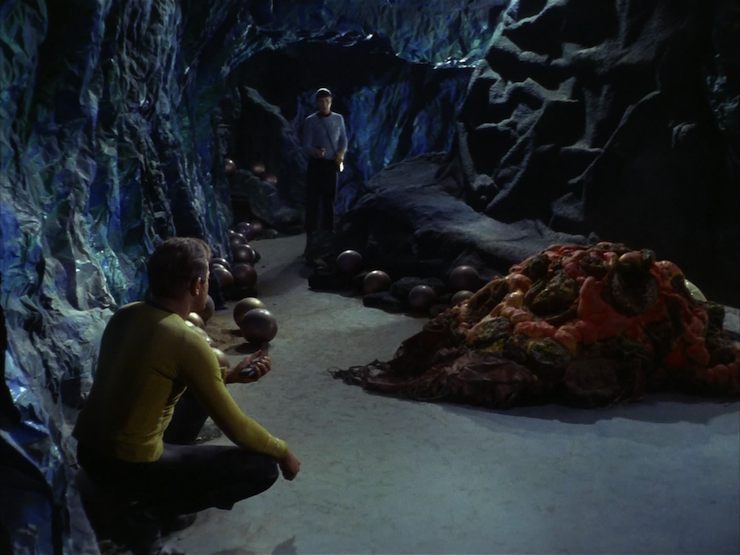
Channel open. “She really liked those ears?
“Captain, the Horta is a remarkably intelligent and sensitive creature with impeccable taste.
“Because she approved of you?”
“Really, Captain, my modesty—”
“Does not bear close examination, Mr. Spock. I suspect you’re becoming more and more human all the time.”
“Captain, I see no reason to stand here and be insulted.”
Kirk expressing surprise that the Horta likes Spock’s ears, Spock unable to hear him over the sound of how awesome he is, Kirk insulting Spock, and Spock proving the insult accurate.
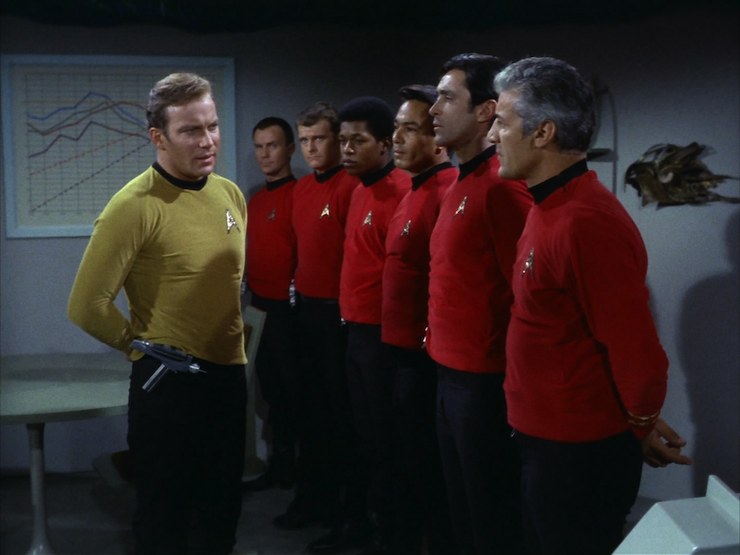
Welcome aboard. Ken Lynch plays Vanderberg, while Brad Weston, Biff Elliot, and George E. Allen play the various personnel on Janus. Enterprise crew includes Barry Russo as Giotto (he’ll be back in “The Ultimate Computer” as Commodore Wesley), Jon Cavett as the guard who’s killed, and recurring regulars DeForest Kelley and James Doohan.
Trivial matters: When this episode first aired, it was announced during the closing credits that Star Trek had been renewed for a second season.
The Horta was created by Janos Prohaska, who created many of the alien costumes for the show. He brought it into Gene Coon’s office, and Coon loved the look and wrote an episode around it.
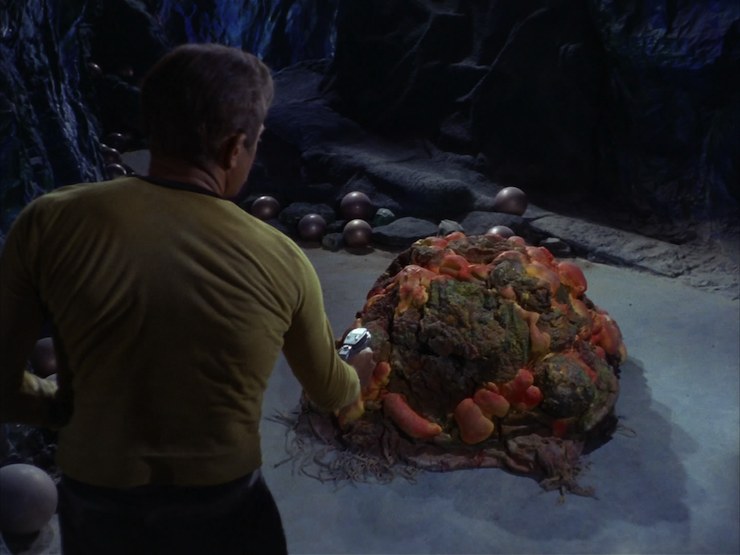
Giotto has appeared in many many many works of tie-in fiction as the security chief of the Enterprise during the five-year mission (and after, in the case of the New Earth miniseries).
This is another episode that was adapted into fotonovel form, in addition to James Blish’s adaptation in Star Trek 4.
William Shatner learned that his father had died during the filming of this episode. He insisted on getting all his scenes filmed ahead of time so he could go home for the funeral without disrupting the shooting schedule, though the crew offered to shut down production.
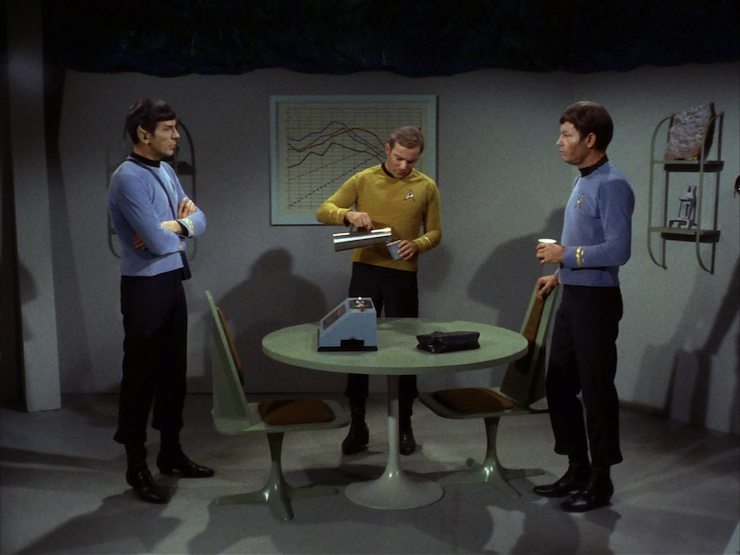
Diane Duane would put one of the Horta babies on the Enterprise as a crew member—Lieutenant Naraht—in several of her novels and comic books. He quickly became a fan favorite. The Horta also play a role in the TOS novel Devil’s Bargain by Tony Daniel. The DS9 novel Devil in the Sky by Greg Cox & John Gregory Betancourt has Deep Space 9 being overrun by baby Hortas. The Borg tried to assimilate another human-Horta mining operation in the 24th century in “A Rolling Stone Gathers No Nanoprobes” by Andy Mangels, Michael A. Martin, Paul Neary, & David Roach, a story in WildStorm’s Star Trek Special comic book.
Pergium would be referenced again in DS9‘s “Prodigal Daughter” and Voyager‘s “Fair Trade.”
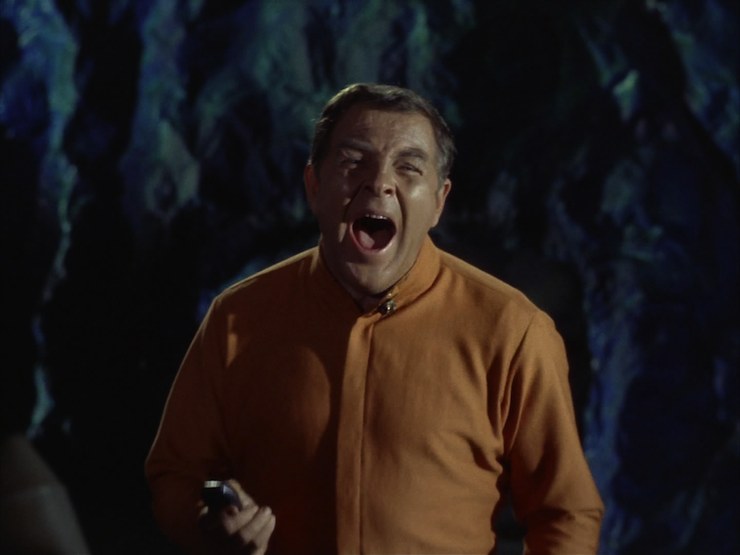
To boldly go. “Pain!” This is, in many ways, the prototypical Star Trek episode. It starts out like every monster movie that’s ever been made, with the suspenseful opening complete with the grisly death of some poor schlub who was already scared to death. Throughout the episode, there’s no doubt in anyone’s mind that this is a monster that has to be killed before more people die.
And then it’s turned on its ear. Such twists are sufficiently commonplace now that it’s easy to forget how radical it was on Star Trek. Just as it was with “Charlie X” and “Arena,” it is here: there are no “monsters,” there are just people, even if those “people” are shaggy silicon-based life forms. Charlie killed a bunch of people, but it’s not because he’s evil, it’s because he’s a kid who was granted absolute power and couldn’t handle it. The Gorn killed a bunch of people, but it’s not because they’re evil, it’s because they were invaded. The Horta killed a bunch of people, but not because she’s evil, it’s because she’s a mother protecting her young.
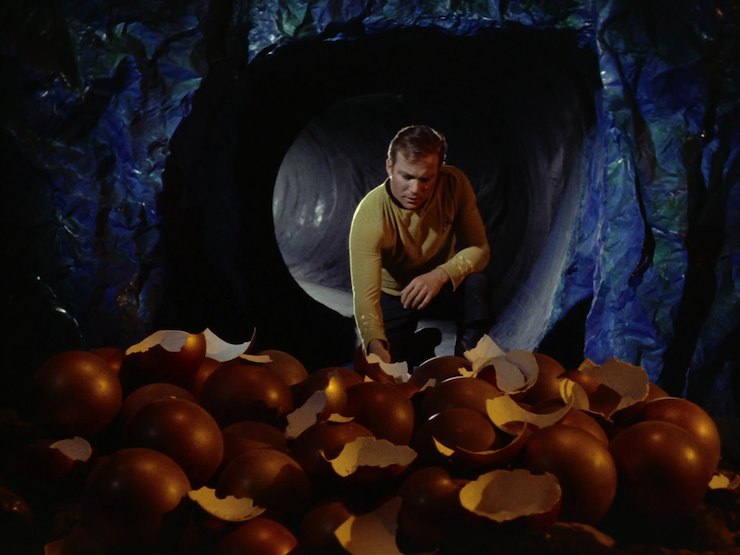
Best of all, though, is that the final message is, once again, compassion. Once the truth comes out, it doesn’t lead to more bloodshed. In the end, the Horta and the humans compromise, both realize what they’ve done, and they work to fix it, just like the humans and the Gorn did, and just like Kirk tried to do with the Thasians. I particularly love the fact that the human viewpoint is not the only legitimate one in the end when Vanderberg says the Horta aren’t bad for being so funny-looking, and Spock reveals that the Horta thought the exact same thing about the humans.
This is a magnificently constructed episode, not only in how well Gene Coon inverts the usual monster-movie tropes, but also in terms of pacing and intensity. Yes, the miners come off as assholes, but fifty of their colleagues have been killed, which kind of strains the politeness muscles—and they relent the moment they realize that they accidentally started this by destroying eggs.
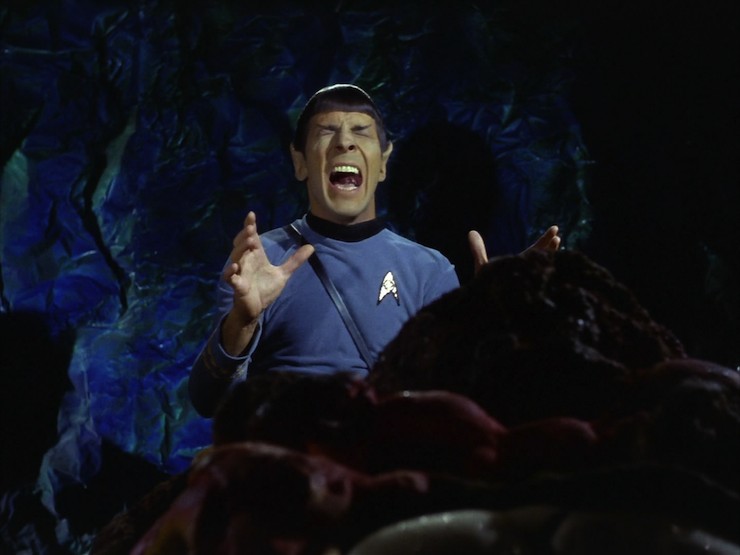
It’s not perfect. The overwhelming white-maleness of the mining crew is irksome, especially given the diversity in Giotto’s security detail. McCoy’s skepticism regarding silicon-based life is a bit too knee-jerk, mostly there only so he can argue with Spock for no reason other than that he’s supposed to argue with Spock. And Spock’s mind-meld with the Horta bleeds over into absurdity more than once, as even Leonard Nimoy’s ability to bring dignity to the undignified is strained past its limit on this one.
But these are minor nits. Overall, one of the greatest Trek episodes, perfectly embodying what makes Trek what it is.
Warp factor rating: 9
Next week: “Errand of Mercy”
Keith R.A. DeCandido will be a guest at RocCon in Rochester, New York this weekend, alongside Star Trek actors Marina Sirtis and J.G. Hertzler, as well as Felix Silla, Ona Grauer, and more actors, and fellow authors Lois Gresh, Jeremy Kahn, and Alec Frasier. Keith will have a table in the dealer room, so come on by and say hi! (And, y’know, buy a book or twelve…)










